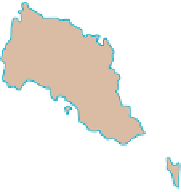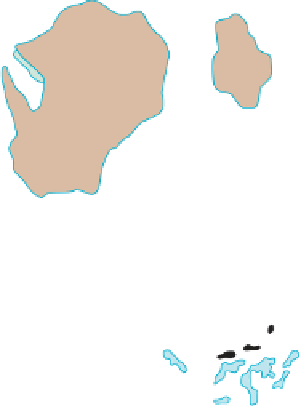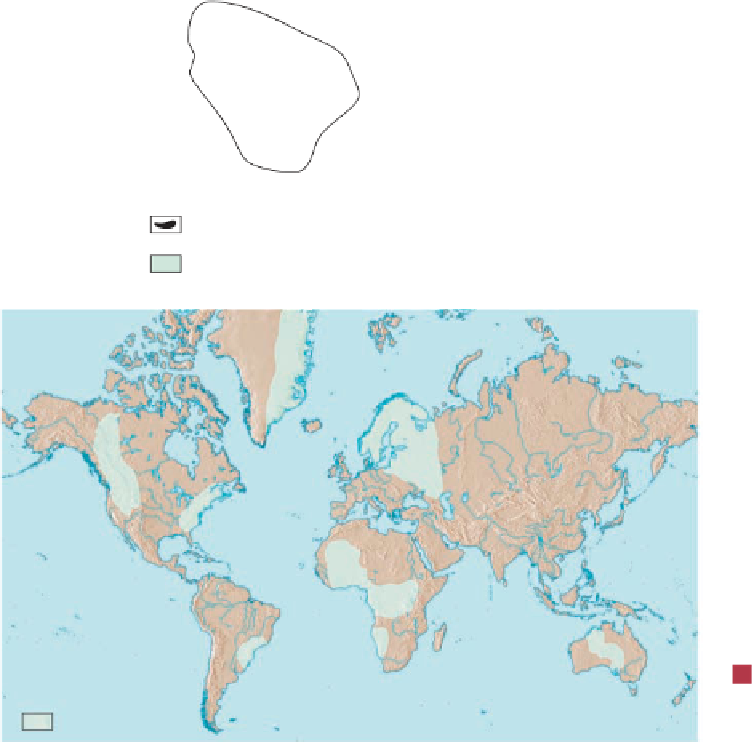Geology Reference
In-Depth Information
◗
Figure 19.15
Proterozoic Glaciation
a
Paleoproterozoic-age glacial deposits in the United States and
Canada indicate that Laurentia had an extensive ice sheet centered
southwest of Hudson Bay.
Lake
Baikal
A
Early Proterozoic
glacial deposits
Minimum areas of
continental glaciation
b
Neoproterozoic glacial centers shown
on a map with the continents in their
present-day positions. The extent of ice
during this time is approximate.
Glacial ice
than 2% of the present-day level of free oxygen. With this
much free oxygen, ozone (O
3
) forms a barrier against incom-
ing ultraviolet radiation, so another process must account
for most of the atmosphere's free oxygen.
Photosynthesis
is much more important in releasing free
oxygen into the atmosphere, but obviously it could not take
place until organisms practicing this metabolic process had
evolved. Organisms that carry out photosynthesis combine
carbon dioxide and water into the organic molecules they need
for survival, and they release free oxygen as a waste product
(Figure 19.17b). We know from the fossil record that organ-
isms that almost certainly practiced photosynthesis were pres-
ent more than 3.0 billion years ago. Even so, at the end of the
Archean Eon, the atmosphere may have had no more than 1%
of its present free oxygen level.
The small amounts of free oxygen present in the atmo-
sphere were probably insuffi cient to oxidize iron in sedimen-
tary rocks, but some ozone (O
3
) was no doubt converted to
elemental oxygen (O) by ultraviolet radiation. Both ozone
and elemental oxygen are more effective in oxidizing miner-
als than atmospheric oxygen (O
2
). However, once an ozone
layer became fully established, much of the ultraviolet radia-
tion was blocked and O
2
became the primary agent for oxi-
dizing minerals.
During the Proterozoic Eon, the free oxygen level
increased from 1% to perhaps 10% of its present level,
but probably not until well into the Paleozoic Era, about
400 million years ago, did it reach its current concentra-
tion of 21% of the atmosphere. The cessation of depo-
sition of banded iron formations and the presence of













Search WWH ::

Custom Search